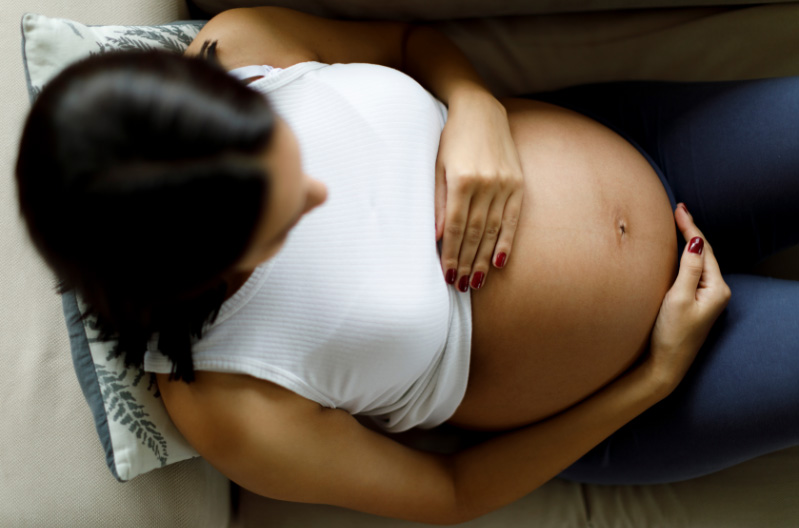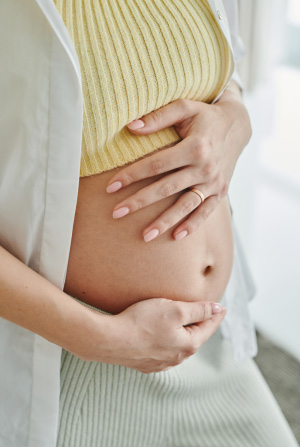
If you’re considering Dallas breast implants, you probably have many questions about the plastic surgery procedure and possible results. And if you don’t have any children but plan to, you may wonder if the pregnancy will ruin your breast implants.
Below is more information about this critical question, as well as other information about breast implants.
Implants Are Safe For Pregnancy And Breastfeeding
The first thing to know is that getting breast implants before pregnancy is safe for you and your unborn child. It’s also safe to breastfeed.
Breastfeeding can be difficult for some women with breast implants, mainly if an incision around the areola is used.
But many plastic surgeons use the inframammary incision, which is beneath the breast. This breast implant incision is away from the milk ducts, so the chances it will affect breastfeeding are minimal. Placing the breast implants behind the breast muscle with this incision makes it even more unlikely you’ll have difficulty with breastfeeding.
Pregnancy Changes The Body, But Not Necessarily Breast Implants
We all know that pregnancy transforms a woman’s body. Your belly gets larger, natural weight gain happens, and you may have stretch marks. Post pregnancy, you slowly regain your natural shape as you lose weight. You may have stretch marks as well as sagging or loose skin in some areas.
But none of these body changes necessarily means that you will see a difference in your breast implants. Many women get pregnant, have a child, and breastfeed without affecting their breast implants.
Post-Pregnancy Breast Surgery Options
If you had breast implants before pregnancy, it’s possible you could notice changes in your breasts after you giving birth. But it’s not usually the volume of breast tissue. Instead, they may see their breasts drooping with excess or baggy skin. This happens because the breasts swelled larger than their implants during pregnancy. Now that they are no longer breastfeeding, the breasts have gone back to their standard size.
New breast implants probably aren’t necessary if this happens to you, but you could need a breast lift instead of another breast augmentation procedures.
How To Tell You May Need A Breast Lift
Below are signs that you could need a breast lift after pregnancy for your implants:
- Are the nipples pointing down? As the excess skin at the breast base stretches and sags, the nipples can start to point toward your feet.
- Do the nipples and areolas sit under the breast crease?
- Are your breasts unusually shaped? Breast implants increase the size of the breasts, but not the shape, and this can change after you’ve been pregnant.
What Is a Breast Lift?
If you notice changes in your breast implant surgery after pregnancy and breastfeeding, a mastopexy or breast lift could be what you need.
A breast lift is done under general anesthesia in your surgeon’s office or a hospital. There are several techniques your surgeon can use to remove breast skin and lift the implants. He’ll choose a method based on your breasts’ size and shape, size of the areola, skin quality, and degree of sagging.
The breast lift procedure is as follows:
- Your surgeon makes incisions, takes out extra breast skin, and shifts the nipples and areolas to a higher place on the breast.
- If the areolas have gotten stretched during pregnancy, they can be made smaller.
- Skin that used to be above the areola is pulled down and sewn together below the breast to give it the final lifted shape.
- Your plastic surgeon will take out extra skin and sew the incisions, tighten the skin, and put sutures deep in the tissue to keep the breast lifted for a long time.
- Scars are minimal and usually beneath the breasts. But some women may have minor scarring on the top of the breasts.
- The areolas and nipples stay attached to the underlying breast tissue, so the sensation is usually preserved.
- Some patients may be able to avoid some of the standard incisions, such as the horizontal one under the breast and the vertical incision from the areola to the crease of the breast. Your surgeon will discuss this option if he thinks you’re a good candidate.
 Questions and Answers
Questions and Answers
Do you still have milk production if you have implants?
Breast enlargement, lift, and breast reduction surgery procedures may influence breast tissue nerves and ducts, potentially affecting lactation. Implants beneath the muscle tend to have a lesser impact on milk production compared to those placed above the muscle.
Do breast implants look better after pregnancy?
After pregnancy, some women notice that their implants appear more natural and are satisfied with the final outcome of their breast augmentation surgery. On the other hand, some women choose breast lifts post-childbirth to regain their pre-pregnancy aesthetic.
Is it OK to breastfeed with implants?
Incisions below the breast fold or through the armpit typically pose no issues for breastfeeding. However, if the incision surrounds the areola, potential problems may arise as it could affect milk ducts. The true impact remains uncertain until attempted.
How long do breast implants last?
Presently, breast implant typically endure for an estimated 10 to 20 years, and some women maintain them even beyond the 20-year mark. It’s vital to understand that breast implants lack a predefined expiration date or shelf life. The FDA does not classify breast implants as lifelong devices.
Book Your Breast Implant Surgery Today
Learn about breast implants and pregnancy! Once you’re ready to take the next step and book your plastic surgery consultation, there’s no turning back. The results you’ve dreamed of are within your grasp. Stop delaying, and schedule a breast augmentation surgery appointment with board certified plastic surgeon Dr. Raja Mohan today.
You won’t regret your decision!
References
- Breast Lift Procedure. (n.d.). Accessed at https://www.plasticsurgery.org/cosmetic-procedures/breast-lift
- Breast Lift Guide. (n.d.). Accessed at https://www.americanboardcosmeticsurgery.org/procedure-learning-center/breast/breast-lift-guide/
 Questions and Answers
Questions and Answers